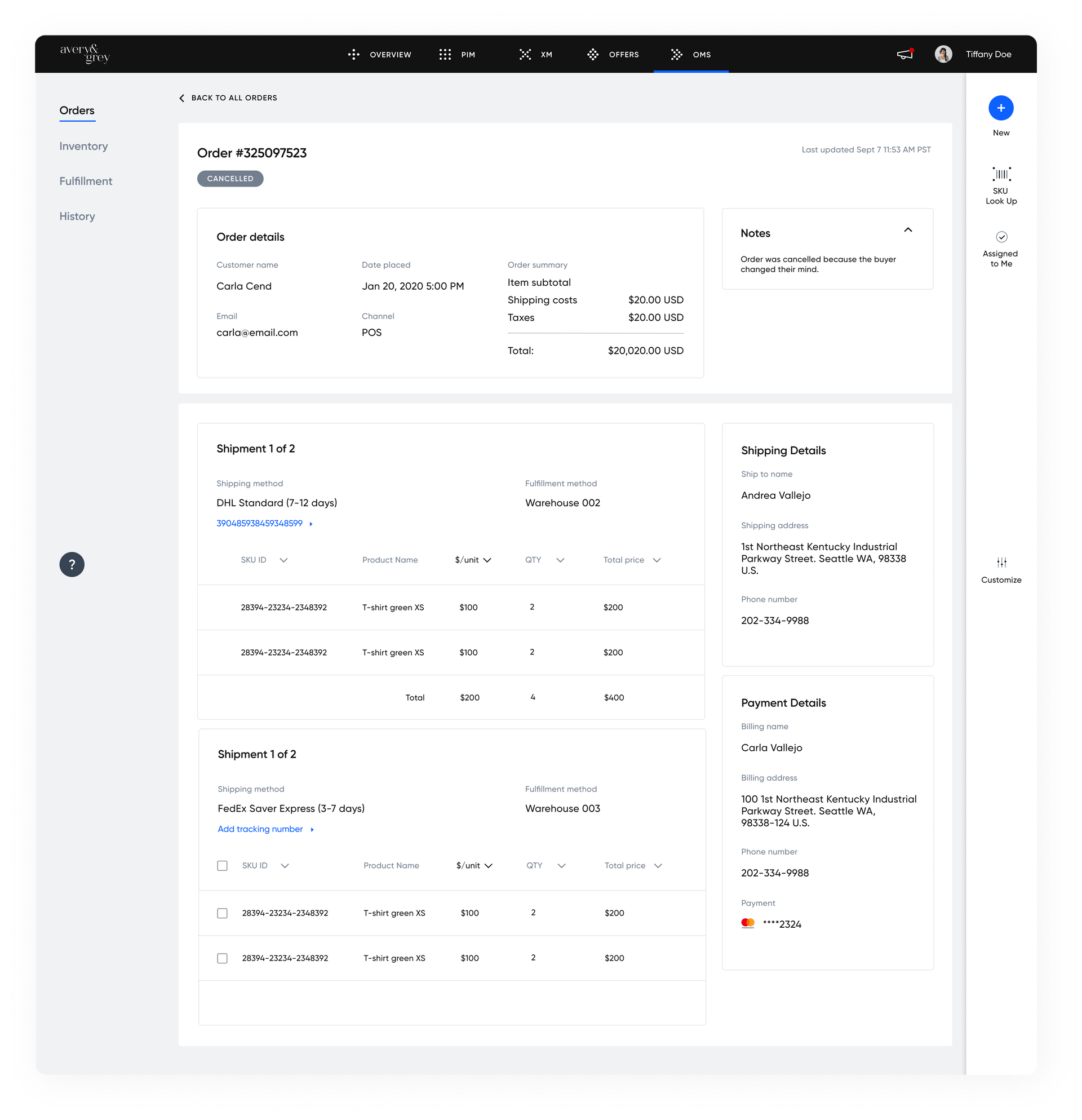What Is SAP Order Management System and Its Alternatives?

The order management solution within SAP Commerce Cloud results from SAP’s acquisition of Hybris in 2013. SAP Commerce Cloud is an enterprise resource planning (ERP) platform that’s popular despite the difficulties companies face when scaling with an ERP.
SAP Commerce Cloud has grown significantly in recent years, with over 3,000 online stores using the platform. However, many companies prefer to use a dedicated order management system (OMS) rather than an ERP like SAP Commerce Cloud. In this post, we’ll consider the benefits and drawbacks of SAP’s order management system and its alternatives.
[toc-embed headline=”SAP’s Order Management System Features”]
SAP’s Order Management System Features
Advantages of SAP’s order management system
In 2013, SAP Commerce Cloud was one of the best ERP systems. Its order management features can perform critical tasks that many companies rely on for an order management system.
In recent years, headless e-commerce has been increasingly important for enterprises. As a result, SAP built Spartacus, an application that lets users construct headless storefronts supported by the backend of SAP Commerce Cloud. The result is a more customizable and secure experience backed by an e-commerce monolith.
The headless-monolith structure is helpful for small businesses bringing their stores online. Namely, it lets business owners run their systems from one platform while getting the flexibility of a separate storefront. Furthermore, SAP’s order management interface is intuitive, simplifying every step of order management.

Disadvantages of SAP’s order management system
SAP’s order management has all the advantages of a well-established, monolithic e-commerce system. However, those same qualities have disadvantages inherent to the platform. These disadvantages prevent SAP Commerce Cloud from being a one-stop solution for enterprises.
Order management systems backed by monolithic e-commerce platforms are difficult to manage at scale. Enterprises need a level of flexibility simply not supported by systems like SAP’s order management software. The result is a complex and often costly replatforming process.
Furthermore, enterprises need a level of security that SAP’s order management system does not provide. Even if enterprises use the strangler pattern to break away from the legacy platform, the project can take a significant amount of time and resources.
SAP Commerce Cloud is not a dedicated OMS and may be missing important order management features. Rather than optimize its OMS, SAP prefers adding other functions that meet the needs of small businesses. Therefore, order management is just one of many functions the platform can perform.
[toc-embed headline=”Alternatives to SAP’s Order Management System”]
Alternatives to SAP’s Order Management System
Traditional platforms have monolithic architecture like SAP’s order management system and can be competitive alternatives for companies looking for similar software. But those looking for another headless commerce platform must examine more modern competitors.
Traditional OMS alternatives
- Oracle has had one of the most popular OMS platforms since 1993. However, it has pros and cons, including a robust feature set weighed down by a clunky user interface.
- IBM Commerce Websphere is another legacy, Java-based OMS option. It can leave its users saddled with years of technical debt and hasn’t kept up with the modern headless and microservices-based order management solutions.
- Demandware or Salesforce Commerce Cloud is a legacy platform that’s a step ahead of its peers. However, its customers are looking for customization that Salesforce can’t provide and are moving on to microservices instead.
Modern OMS alternatives
- Shopify has a headless commerce system that sets it apart from systems like SAP Commerce Cloud. But Shopify has also fallen behind in recent years because of its reluctance to adopt a microservices architecture.
- BigCommerce also uses headless architecture to let its users customize their systems with greater flexibility. But the centralized, monolithic nature of its platform still lacks the benefits of the microservices that users need.
- fabric uses microservices, letting its users pick the features they need. fabric’s users also benefit from its security and intuitive user interface, making it lead the pack among the most modern OMS options.
See Also: OMS Software: 5 Must-Know Order Management Systems for Enterprise Retail
[toc-embed headline=”Key Takeaways”]
Key Takeaways
- SAP’s order management system offers the ability to perform headless commerce on a single, trusted platform.
- Compared to SAP’s order management system, there are other OMS options that include deeper feature sets to meet the larger needs of rapidly growing and enterprise users.
- SAP’s order management system only offers headless commerce through additional software that could add a layer of difficulty compared to natively-headless platforms.
- fabric OMS has a varied feature set that users can pay for on an individual basis because of its microservices architecture.

Tech advocate and writer @ fabric.
